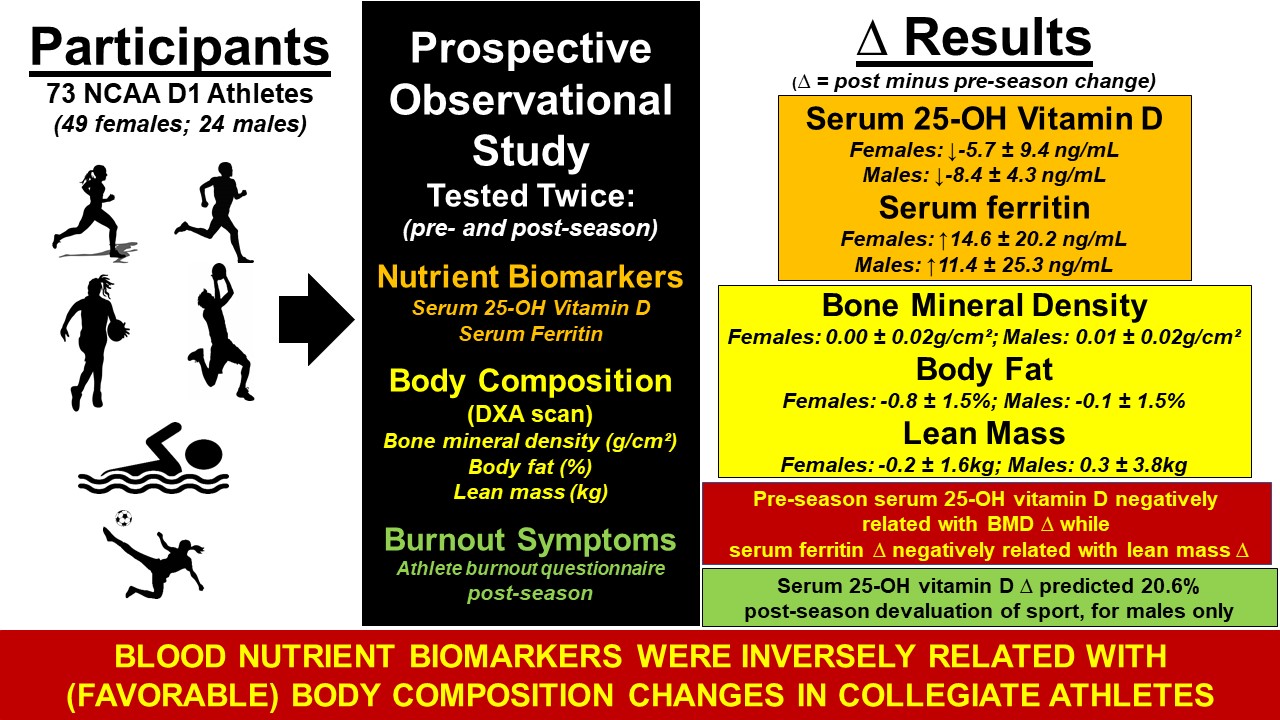Adequate serum vitamin D and iron levels are thought to positively influence physical training adaptations and mood. The purpose of this prospective, observational, study was to investigate relationships between serum 25-OH vitamin D and serum ferritin levels with body composition and athlete burnout symptoms. Seventy-three collegiate athletes (49 female) from 7 indoor and outdoor sports were tested pre-season and post-season for: nutrient biomarkers (serum 25-OH vitamin D and serum ferritin) via venipuncture; body composition (total lean mass, bone mineral densi-ty/BMD, and % body fat) via dual energy x-ray absorptiometry (DXA) scans; and athlete burnout symptoms (post-season) via the athlete burnout questionnaire (ABQ). When male and female co-horts were combined, significant relationships were noted between pre-season serum 25-OH vit-amin D versus the change (∆: post-season minus pre-season) in both BMD (r=-0.34;p=0.0003) and % body fat (r=-0.28;p=0.015). Serum ferritin ∆ was significantly associated with lean mass ∆ (r=-0.34;p=0.003). For burnout symptoms, serum 25-OH vitamin D ∆ significantly explained 20.6% of the variance for devaluation of sport in the male cohort only. Across time, serum 25-OH vitamin D levels increased while serum ferritin levels decreased, non-significantly, in both males and fe-males. Relationships between nutrient biomarkers and body composition were opposite of physio-logical expectations.

